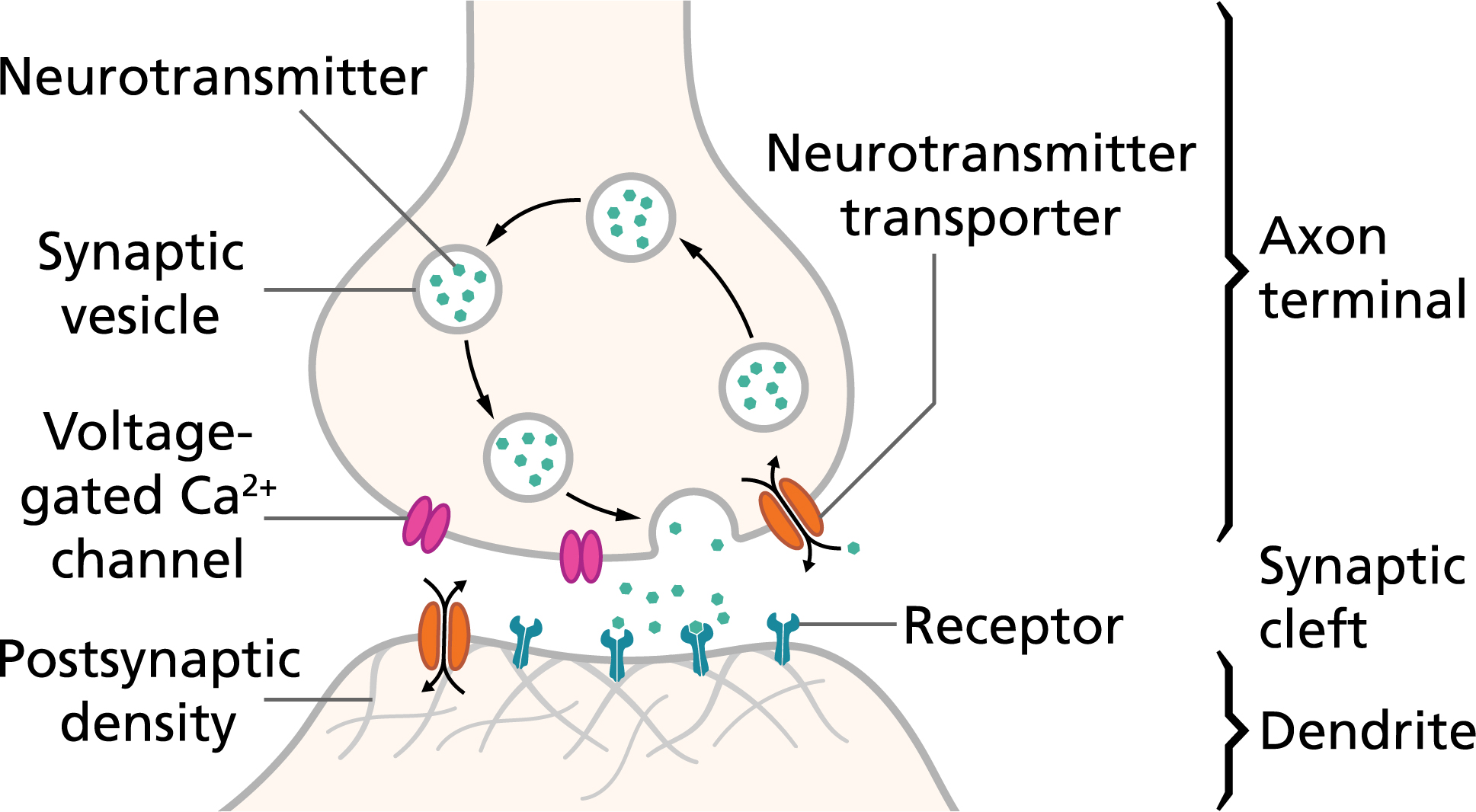What Best Describes How a Signal Travels Across Nerve Synapse
Neurons essentially communicate with each other through synapses. Chemical electrical kinetic potential penis vas deferens urethra prostate seminal vesicles testis and scrotum.

Synaptic Transmission Clinical Relevance Teachmephysiology
A storm blew a population of birds to an uncharted island.

. The electrical signal triggers release of messenger molecules called neurotransmitters at the end of the sending neuron. Shortening or elongating a muscle to perform muscle actions. Impulse transmission through synapse is accomplished by electric current.
Now the action potential generate in second neuron. When the nerve impulse reaches the dendrites at the end of the axon chemical messengers called. An electrical nerve impulse travels along the first axon.
The synapse is a junction between the axon terminals of one neuron and the dendrites of another neuron. How the Impulse Travels A synapse is a small gap between two neurons that are trying to send a message to one another. Electrotonic and action potentials.
Google Classroom Facebook Twitter. An involuntary movement in reaction to stimulus. Chemical synapse- through the lysosomes.
When the nerve impulse reaches the dendrites at the end of the axon chemical messengers called neurotransmitters are. In order for a message to be sent from one neuron to another it must cross the synapse. What is the primary component of muscles.
Which of the following processes best describes how a signal travels across a nerve synapse. D in the synapse. Electrical synapse -through gap junctions.
The passage of a signal across a synapse is called synaptic transmission. An axon of one neuron will send a message to the dendrite of another neuron almost like fitting together pieces in a jigsaw puzzle. These neurotransmitters diffuse across the gap of the synapse and bind to specific receptors on the dendrite of the receiving neuron.
The synapse The synapse is the space between the cell s sending the signal the pre-synaptic cell s and the cell s receiving the signal the post-synaptic cell s. So at the synapse the electrical signal is converted to a chemical signal. Which of the following best describes what will likely occur as a result of increased dopamine in the synapse.
In this type of synapse a. Which of the following proceses Best describes how a signal travels across a nerve synapse. After many generations two separate species of birds evolved.
A link describing the process in detail is given in the related links section. It must trigger the release of neurotransmitters which then carry the signals across the synapse in order to reach the next neuron. However a small space appears there and this is the synapse.
Anatomy of a neuron. Which of the following processes best describes how a signal travels across a nerve synapse. Overview of neuron structure and function.
When signals have traveled through neurons to the endpoint they cannot simply continue onto the next neuron. A synapse is a junction or space between two neurons or a neuron and a receptor which allows the transmssions of an electrical or chemical signals to another cell. How neurons communicate with each other at synapses.
This neurotransmitter drifts across the gap eventually contacting the postsynaptic neuron. The neuron and nervous system. Messages are received by the dendrites and travel through the cell body and the axon to the axon terminals.
Which of the following connects the ovaries and uterus. Which of the following proceses Best describes how a signal travels across a nerve synapse. Conjoint synapse -partly electrical partly chemical.
Electrical synapses allow electrical signals to travel quickly from the presynaptic cell to the postsynaptic cell rapidly speeding up the transfer of signals. Which of the following processes best describes how a signal travels across a nerve synapse. The term synapse actually refers to the machinery required for information transfer and include the pre-.
A simplified explanation followsWithin. Electrical charges cross the synapse. When the impulse reaches the pre synaptic knob the impulse itself act as stimulus for the post synaptic neuron causing depolarization.
The special protein channels that connect the two cells make it possible for the positive current from the presynaptic neuron to flow directly into the postsynaptic cell. Most of the synopsis in the center in the central nervous system of our body involved in signal transmission belong to the category of chemical synapse stop. Describe how a nerve impulses crosses a synapse in the nervous system.
An electrical nerve impulse travels along the axon of the first neuron presynaptic neuron. Synapse A caused a failed initiation resulting in no action potential. Transmission of nerve impulse across a synapse by chemical means was discovered in 1936 by Sir Henry Hallet Dale a British Pharmacologist and Nobel laureate 1875-1968.
The Science Museum website explains that impulses that reach a synapse located at the end of a nerve cell which necessitates that the impulse must travel across a gap stimulate the neuron to produce and secrete a neurotransmitter. The structure that allows neurons to pass signals to other neurons. It occurs as under- i When an impulse arrives at the synaptic knob of the axon it depolarizes the presynaptic membrane and increases its permeability to calcium ions Ca.
Electrical transmission theory. The first neuron is called the presynaptic neuron and the target cell is refered to as the post synaptic neuron.

In The Nervous System What Is The Function Of The Synapse Socratic

Action Potentials And Synapses Queensland Brain Institute University Of Queensland

Comments
Post a Comment